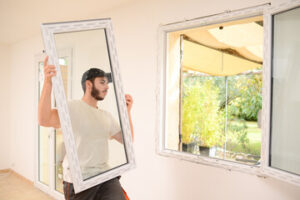Accurate pest identification is essential before implementing any control program. Understanding how a pest thrives can help develop the right control strategy.

Physical and mechanical controls can be used to alter the environment, including barriers, screens, fences, traps, and radiation. Biological control methods include releasing natural predators or pathogens, such as nematodes and bacteria that attack root worms and tomato hornworms. For professional help, contact Pest Control Meridian ID.
Ideally, the best way to manage pests is through preventive measures. This involves avoiding and blocking access to the food, water and shelter that pests need. Oftentimes, this requires the use of physical and/or chemical control methods to create barriers to pests.
For example, securing storage areas with tight lids and/or screens to keep out insects, rodents, and other critters, can help to prevent damage to objects during transportation and long-term storage, as well as to protect the contents from contamination with diseases, such as fleas, ticks, flies, ants, mosquitoes, and rodent droppings. Keeping storage rooms and exhibits clean can also lessen the likelihood of pest infestation by removing food sources and preventing places for them to hide.
Another preventive measure involves regular scouting and monitoring of the site for pests, noting their activities, and responding to them accordingly. This threshold-based decision making is a key element of an IPM approach to pest management, which prioritizes prevention over treatment. For example, if a museum notices a few flies in one room, this is not likely to warrant an insecticide application. But, if they see hundreds of flies in one room and a high number of flies on other surfaces throughout the building, this is a sign that pests are getting out of hand and should be treated.
Other preventive strategies include locating and sealing leaks, which are particularly important for sites where foodstuffs are stored. This includes caulking cracks, repairing broken windows, and sealing vents. Closing off the many ways that air leaks through walls, cabinets, and other surfaces can help to prevent the entrance of pests, as well as to reduce the amount of expensive energy needed to heat and cool buildings.
Lastly, it is important to regularly empty and wash trash containers in order to avoid attracting pests with rotting food scraps. Keeping spaces clean and free of clutter, such as stacks of boxes or paper, can also be helpful in reducing the attractiveness of a site to pests. Lastly, it is important to keep abreast of new developments in the field of pest management, including improved formulations of insecticides, better trapping systems, and other forms of biological controls.
Suppression
Whether prevention or suppression is your goal, you need to choose a strategy that will control pest numbers or damage to an acceptable level without harming beneficial organisms and people. Suppression strategies include trapping, netting, chemical control and habitat modification.
Biological pest control involves the use of predators, parasitoids and pathogens that naturally reduce a pest population. The term “natural enemies” broadly refers to living organisms that naturally feed on or prey upon pest populations and may include insects, bacteria, fungi or other microorganisms. Biological control is often less costly and more environmentally sound than chemical control, but it requires research to locate potential natural enemies, then introduce them at the right time in the pest’s life cycle to have a significant effect on the target population.
Classical biological control uses predators or parasitoids bred in the laboratory and then released into the field. The most common modern biological control tactics involve the release of natural enemies that are already in the environment, such as lady beetles, rove beetles and flower bugs. Other methods include the introduction of pathogens that can reduce a pest’s ability to reproduce or kill its host, such as nematodes and viruses.
Insect pests are largely regulated by density-dependence, which means that a moderate reduction in the number of insects can dramatically lower their population. A more extreme reduction in the pest population may be achieved through sterile insect techniques, such as production and release of large numbers of sterile males.
Physical controls, including traps, netting and decoys, discourage or divert pests from food sources. Several types of sanitation practices can help prevent or suppress pests in urban and agricultural environments, such as improved garbage handling and reducing the amount of available water and shelter for pests. Integrated pest management (IPM) techniques aim to prevent and suppress pests through long-term monitoring, habitat manipulation, cultural practices, crop selection and the use of resistant varieties and chemical treatments that are used sparingly and only when monitoring indicates their need.
Eradication
Pests infiltrate homes, buildings and other structures through cracks and crevices, windows and doors, and other entrance points. They often seek food, shelter or warmth inside.
Pest control strategies include preventative measures like keeping spaces clean and sealing entry points. They also include eliminating or controlling the population of pests, either by removing them or killing them. Other strategies are more focused on eradicating the pathogens that cause diseases. This includes the use of biological pest control methods such as parasitism, herbivory and nematodes.
Whether you use organic or chemical-based pesticides, there are many steps that must be taken to ensure your home and property is safe and free of pests. This may involve a number of techniques that are used in combination, such as traps and baits, to prevent pests from returning after treatment is completed.
Physical Traps and netting can be effective for preventing pests from entering your living space. They are simple to set and can be hung in places where pests frequent. They may require more manual intervention than other types of pest control, such as catching or disposing of the traps or the pests once they are caught.
Chemical Chemical pest control uses solutions that contain toxins to eliminate or deter pests. These typically work faster and provide instant results. Examples of chemical pest control include repellents, which keep pests away, and insecticides, which kill insects.
When deciding to employ chemical controls, it is important to consider the tolerance level for the pest and its effect on the ecosystem. Eradicating a pest can have unforeseen consequences, such as the die-off of natural predators that can help control other pests or the emergence of new strains that can be more aggressive and destructive.
Integrated pest management (IPM) is an approach to pest control that involves monitoring and assessing the problem, then taking action to prevent or reduce it. Some preventative measures include sealing cracks and crevices, reducing moisture, improving ventilation and trimming vegetation. IPM also focuses on early detection, allowing professionals to catch problems before they grow out of hand.
Natural Forces
As an alternative to chemical pest control, gardeners and growers use natural forces to manage pests. These non-chemical approaches may kill a pest directly, block it from entering a field or crop, or make the environment unsuitable for it. For example, using a trap crop (such as zinnias) to lure and then exterminate Japanese beetles is an effective biological control method. Other physical controls include the use of mulches for weed management and steam sterilization of soil to manage diseases.
Predatory birds, reptiles, amphibians, fish and mammals kill some pest species or reduce their numbers. Fungi, bacteria, protozoans and nematodes can also reduce the population of some insect pests or cause disease in them. Pheromones can deter a pest species or keep it from maturing into its normal adult form.
Environmental factors can limit or prevent pest populations from growing. For example, the availability of water limits the growth of some plant-eating pests, and weather conditions such as temperature, day length and humidity affect the activity and reproduction of many others. Some landscape features, such as mountains and bodies of water, restrict the movement of pests between locations. Likewise, the availability of food and shelter – such as places to overwinter or hiding spots – affects pest populations.
If a pest species is of foreign origin, it is considered an invasive species and must be controlled to minimize its impact on native plants and animals. Classical biological control involves introducing a predator or parasite of the invasive pest to control it. This requires a thorough understanding of the biology of both the pest and its natural enemies, as well as a rigorous process to find suitable enemy species, collect them, quarantine them, test them for harmful effects and release them in the target area under carefully controlled conditions.
Because a single natural enemy may not control a whole pest species, biological control methods often involve repeated releases of different natural enemies over an extended period. This can be expensive and time-consuming. However, compared with the cost and risk of applying chemicals, biological control can be an economical and environmentally friendly option.
